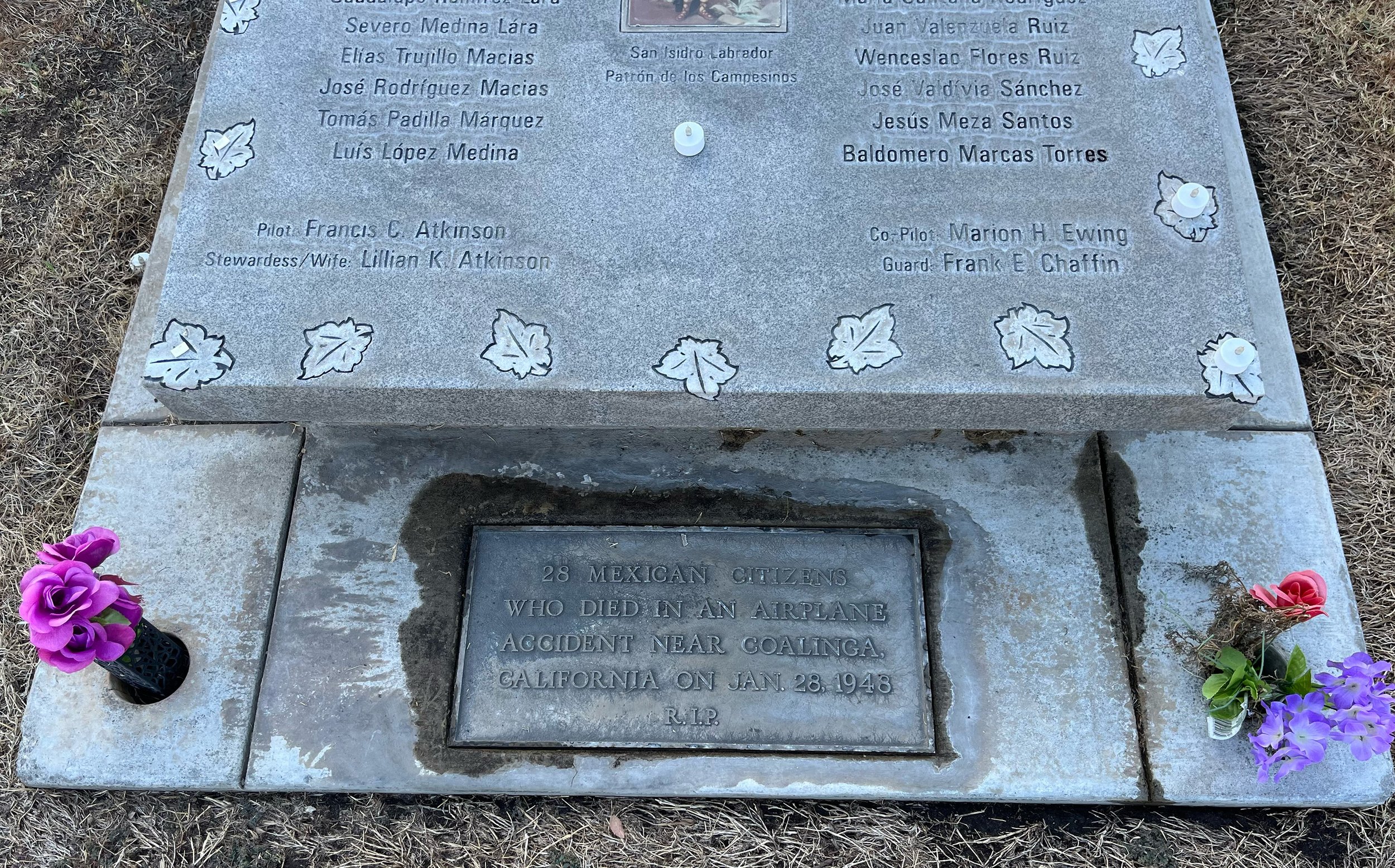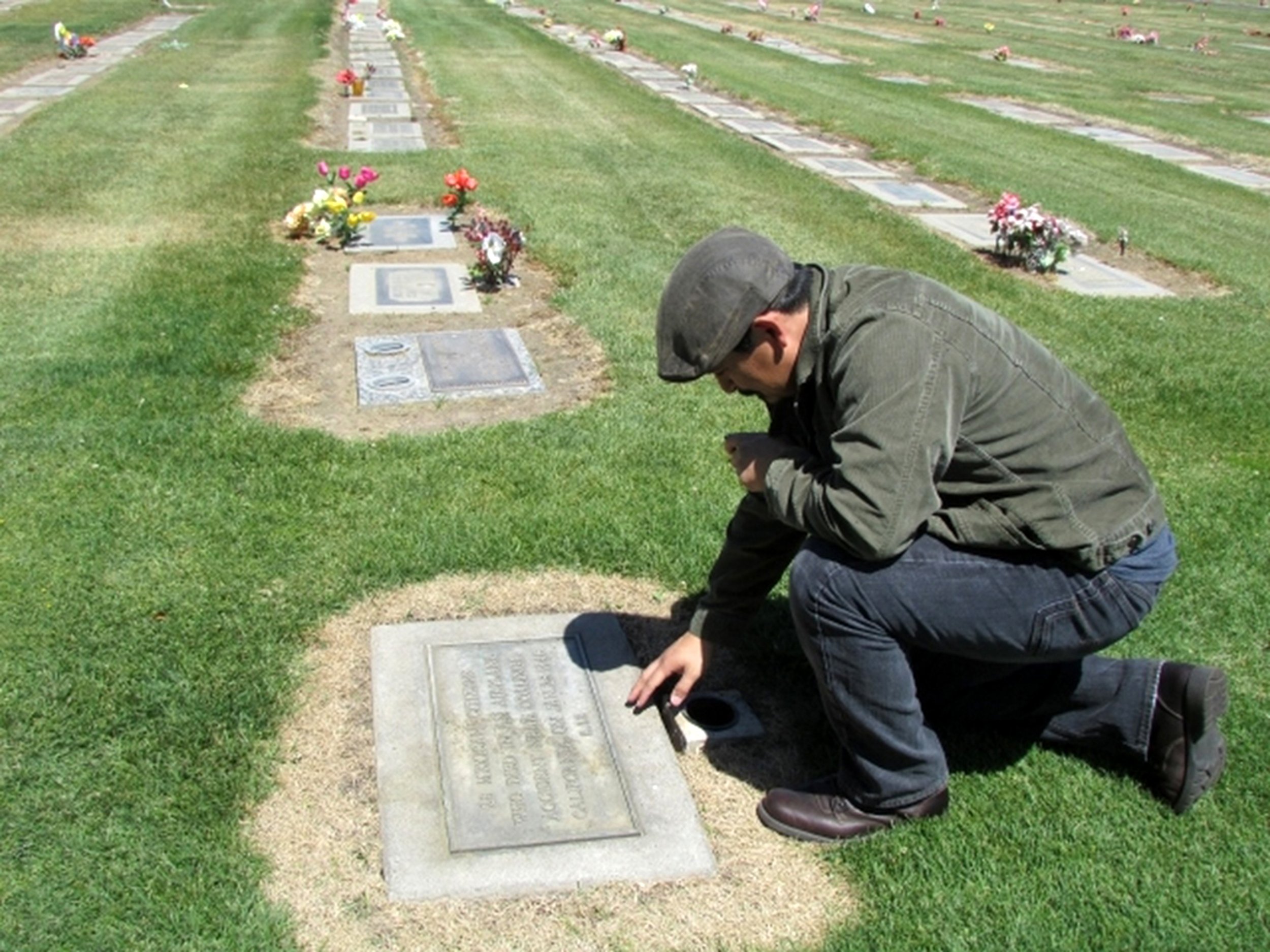The Deep Roots of Deportation
Items belonging to immigrants who entered the United States illegally are loaded onto a plane for a deportation flight to El Salvador by U.S. Immigration and Customs Enforcement in Houston on November 16, 2018. Photo by David J. Phillip/AP Photo
In a divided political climate, many now hold their breath, waiting to see if deportation rhetoric becomes reality. Some question whether the immigrant pursuit of “a better life” still has meaning.
Editor’s note: This story was co-published with Puente News Collaborative in partnership with palabra. Puente News Collaborative is a bilingual nonprofit newsroom, convener and funder dedicated to high-quality, fact-based news and information from the U.S.-Mexico border.
An unrelenting sun drenches its light on the huge tombstone’s image of a rust-robed San Isidro, the Catholic patron saint of farmworkers.
Beneath the tombstone lies the remains that were found of 28 Mexican farmworkers who perished in a 1948 plane crash, one of the worst deportation catastrophes in U.S. history. Their nameless lives were immortalized in the Woody Guthrie poem “Plane Crash at Los Gatos,” more commonly known as “Deportee.”
The poem became a protest song against the anonymity of the deaths sung by luminaries like Guthrie, Bruce Springsteen, and Joan Baez. More recently, the deportees’ identities were fully revealed in two books by Tim Z. Hernandez, a native of California’s San Joaquin Valley where the crash occurred.
Donald Trump campaigned hard demonizing immigrants, a strategy that helped catapult him into the White House in a U.S. election unlike any other. Now, the nation’s history of deportation and its consequences merit the closest scrutiny.
Trump says he’ll unleash mass deportation of immigrants without documents and even some immigrants with lawful temporary documents. In racist rhetoric, Trump called immigrants “animals” and “not human” and said they’re “poisoning the blood of America.”
In a polarizing election, can the United States still be a place for immigrant reinvention or has the nation been reinvented with the coming Trump presidency?
Tombstone at Holy Cross Catholic Cemetery in Fresno, Calif., lists the names of the 28 Mexican farmworkers who perished in the 1948 plane crash. Photo by Dianne Solis
“I thought we had learned a lot from history and that we’ve grown a lot, and we haven’t,” said Hernandez, the author of books that examined the fiery crash that took the deportees’ lives and a flight crew of four.
His first book about the incident, All They Will Call You, inspired the placement in 2013 of the gray granite tombstone that finally named those who perished in the Fresno County crash. The book told many of the backstories of the workers and the flight crew. The original marker at Holy Cross Catholic Cemetery had no names.
His second book on the topic is part memoir called They Call You Back, which further chronicled the lives of farmworkers who died in the crash and their families, and threaded that more broadly with other dehumanizing traumas such as police brutality.
Immigrants contribute to the U.S., Hernandez said, as they did in the decades before and after the 1948 plane crash. Deportations split families, leaving what Hernandez calls “an inheritance of trauma” and invisibility that plays out in the next generations.
Trump’s talk of deportation “extends the trauma” and pokes “into the wound,” Hernandez said after the election. But winning candidates are often elected on platforms that are difficult to carry out, and sometimes never carried out, said the University of Texas, El Paso, professor and writer.
Author Tim Z. Hernandez looks at the original headstone with the unnamed migrants at Holy Cross Catholic Cemetery in Fresno. Photo courtesy of Tim Z. Hernandez
The stakes are now particularly high for asylum seekers. “Their deportation could be a death sentence,” says Jenifer Williams, a licensed therapist and executive director of Humanitarian Outreach for Migrant Emotional Health in Dallas, Texas. “They live with a lot of anxiety, usually in the form of PTSD.”
Not far from the cemetery in downtown Fresno, near the remnants of an immigrant neighborhood known as Old Armenian Town, new immigrants gather at the entrance of the local office of ICE, the U.S. Immigration and Customs Enforcement agency.
Many expect tougher policies against immigrants but argue that carrying out mass deportations will be difficult. There aren’t enough immigration judges to handle even one million deportations, a number suggested by the Trump team for the first year, some say.
The latest government figures show that more than 11 million immigrants are in the country without legal status. And, as of September, the nationwide immigration court backlog stood at 3.7 million for about 700 judges.
Some immigrants don’t even get to see an immigration judge before they are removed when caught at the border under a process ramped up during the current tenure of President Joe Biden.
There are also financial costs. The National Immigration Forum, a pro-immigration group, said the labor loss from deportations would “kneecap” businesses and that it would cost more than $150 billion to remove 11 million immigrants. The American Immigration Council puts deportation costs at more than $315 billion.
For Mexicans, deportation history is particularly painful. Estimates vary on the hundreds of thousands swept up in the 1950s in deportations known by the racist name of “Operation Wetback.” In the 1930s, large-scale deportations hit with a jolt: 60% of “deportees” were actually U.S. citizens, according to historians.
U.S. Border Patrol on June 9, 1954, transporting Mexican immigrants to the southern border for deportation during “Operation Wetback,” packed them into trucks. Photo courtesy of the U.S. Border Patrol Museum, via Wikimedia Commons
Today some 4.4 million U.S.-born children live with a parent who does not have legal immigration status, according to an analysis by the Pew Research Center. The same study finds over 4 million mixed-status families in the U.S.
Some immigrants without documents aren’t waiting for the aftermath of the election. Some are already slipping underground.
In Dallas, community organizer Socorro Perales said some immigrants without documents are so deep in hiding that their families in Mexico haven’t heard from them in weeks. Some are buying cheap cell phones that are easily disposable and are more difficult to track, Perales said. “They are going to continue to stay in hiding and continue to suffer emotionally,” she said, after Trump was declared the winner. Others are wondering what happens if they are picked up by immigration officials and their children come to an empty home, Perales added.
Support the voices of independent journalists.Until Dec. 31, your donations will be matched dollar-for-dollar. 
|
Immigrant families have long faced prospects of division. Now there are more of them. And more deportations.
One of those now in hiding is a Mexican immigrant in the Dallas area who had a U.S. government-issued ankle monitor on her leg so tight her skin bled. An employer found someone to cut off the monitor after attempting to extract a promise that the underpaid immigrant wouldn’t leave her North Texas restaurant job, the Mexican immigrant said. When immigration officials showed up at the location where the GPS last pinged, the woman was across the street but spotted their arrival.
She ended up losing her immigration court case in Dallas. “...the case is returned to DHS (Department of Homeland Security) for removal of the applicant,” reads a court decision. “This is a final order. There is no appeal from this decision.”
Immigration authorities told her she needed to prepare to be deported.
“Come tomorrow with your daughters and your belongings,” the immigrant mother said, recounting the conversation with the immigration officers shortly before the election.
“Hasta mañana,” she replied. Mañana never came.
—
Dianne Solis is a freelance journalist. She has worked as a staff writer for The Dallas Morning News and The Wall Street Journal. Her work has aired on KERA public radio and the Texas Standard. She has reported extensively on immigration for decades. She graduated from Northwestern and California State University, Fresno, and was a Nieman Fellow at Harvard. @disolis
Alfredo Corchado is the executive editor for Puente News Collaborative and the former Mexico/Border Correspondent for The Dallas Morning News. He’s the author of “Midnight in Mexico” and “Homelands.” Puente News Collaborative is a bilingual nonprofit newsroom, convener and funder dedicated to high-quality, fact-based news from the U.S.-Mexico border. @ajcorchado









